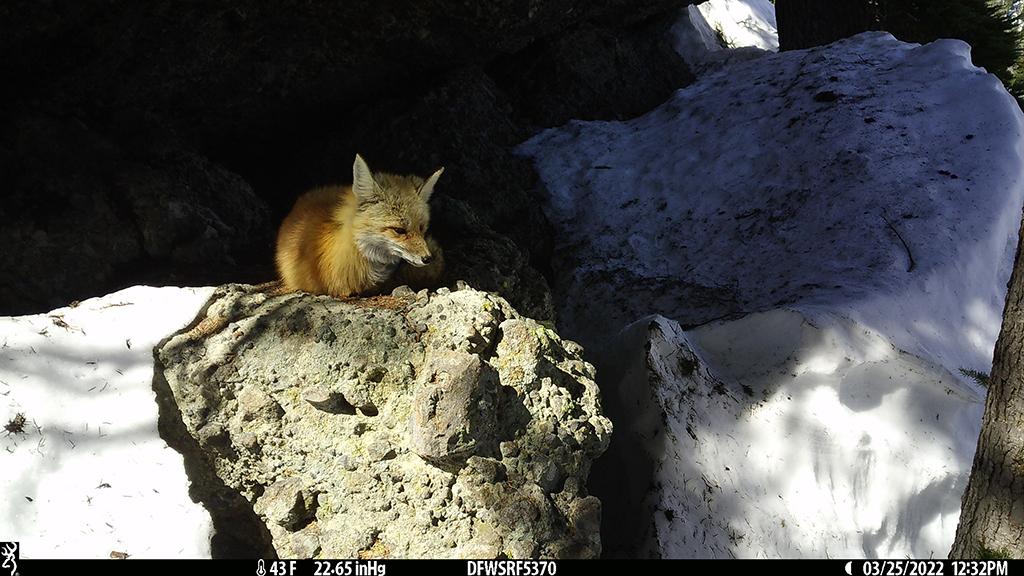When an 1863 survey team sent from the California Geological Survey to explore the region now encompassed within Lassen Volcanic National Park’s boundaries remarked upon the great diversity of flora and fauna, they did not realize or even know this rich variety was due to habitats attributed to three different ecological zones found in the park.

Pika near Lake Helen, Lassen Volcanic National Park / Wayne Steffes via NPS
Within the mixed conifer (below 6,500 feet), red fir forest (6,500-8,500 feet), and subalpine (8,000 to 10,000 feet) ecological zones in Lassen, approximately 300 species of vertebrates (animals with backbones) and 350 species of invertebrates (animals lacking a backbone) live in and roam the Lassen landscape. The vertebrates include 57 mammal species, 216 documented bird species, 9 fish species, 3 amphibian species, and 6 reptile species. During your visit there, you will most likely see more than one Douglas’s squirrel (aka chickaree or pine squirrel). A rarer, but not impossible, sight might include badger, black bear, mountain lion, river otter, skunk, or weasel.
Sit or stand quietly along a trail surrounded by rocky outcroppings and you might just hear the high-pitched “eep” of a pika scurrying around, collecting grasses and other tasty vegetation to store in its winter cache known as a haypile. Pika do not hibernate during the winter, so they need to gather as much food as possible to carry them through the very cold, very snowy winter months.
Believe it or not, pika, as well as other small critters found within the park’s confines, are an imperiled bunch. They can carry plague.
Featured on the Traveler
Weighed down by my camera gear and clearly not as fit as the pika crew farther up the trail, I stopped to catch my breath and wonder why I had agreed to go in search of plague in Lassen Volcanic National Park.
That's right, plague. The word normally conjures images of the Black Death of the mid-1300s, or maybe rats on a ship. You don't normally think of small, cute, furry mammals that can contract and spread the deadly disease in a national park. It would never have occurred to me that plague could be found within the confines of this national park in Northern California, but it is here.
You can read more of this Traveler Feature Story by heading to this page.

A Sierra Nevada red fox caught on trail camera / Kat Kerlin, CDFW
Plague is not the only thing jeopardizing Lassen’s wildlife.
Featured On The Traveler
For decades, researchers have been concerned about the declining population of montane red foxes in the Sierra Nevada mountains. There are two distinct populations of sub-species, one in the central Sierra, and another in and around Lassen Volcanic National Park, in northern California. Biologists think there are fewer than 30 red foxes left in the Lassen area.
Trapping and poisoning were disastrous for the fox population in the 19th and early 20th centuries, but the numbers of foxes haven't recovered the way they would in a healthy, thriving environment. This has puzzled biologists for decades, but a study of the Lassen red foxes from the University of California, Davis, points to a particularly challenging threat to the animals' survival— inbreeding. But, crucially, it also points to a potential saving grace for the red foxes. Breeding them with foxes from outside the region, in what's called a genetic rescue.
You can read more of this story by heading to this page.





